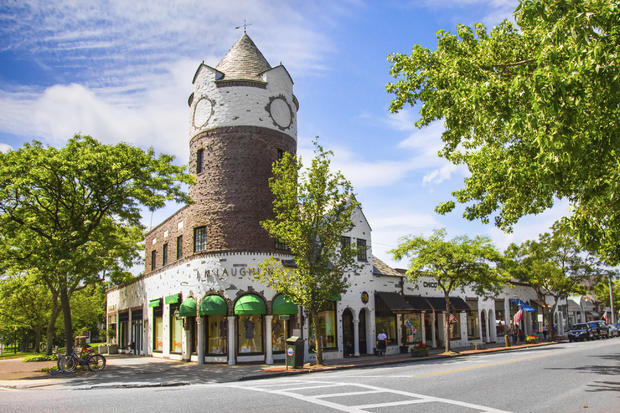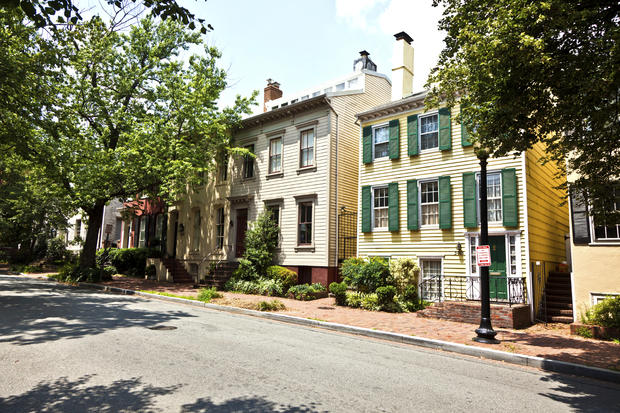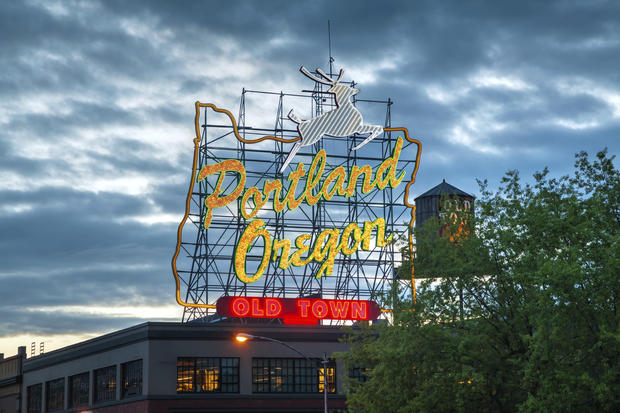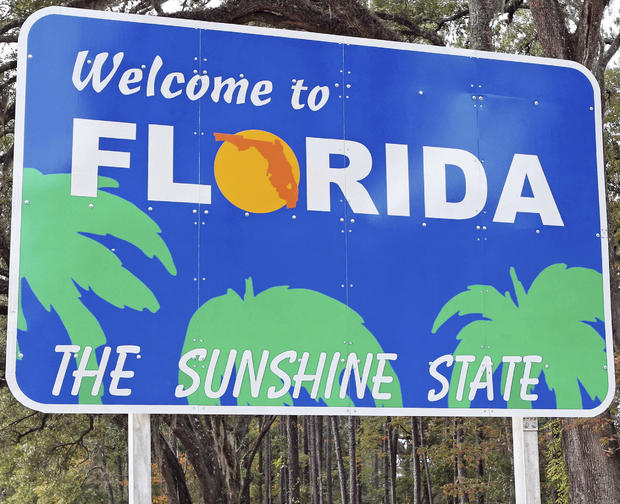10 places where renting a home beats buying
The housing crisis and ensuing recession are long over, but that doesn't necessarily mean it makes more sense to buy a home than it does to rent one.
Existing home sales increased between June and July, with July sales 10.3% higher than they were just a year earlier, according to the National Association of Realtors. However, the $234,000 average price of those houses is starting is starting to price out some first-time buyers. Interest rates on a 30-year fixed-rate mortgage that have held around 4% haven't helped, nor has a supply of houses that has decreased nearly 5% from a year ago.
"Despite the strong growth in sales since this spring, declining affordability could begin to slowly dampen demand," says Lawrence Yun. "Realtors in some markets reported slower foot traffic in July in part because of low inventory and concerns about the continued rise in home prices without commensurate income gains."
As real estate data site RealtyTrac notes, those home prices are making it increasingly easier to rent property than to own it. In 2012, 65% of the population lived in counties where it was more affordable to buy than rent. That shrunk to 58% in favor of buying in 2013, 56% last year and just 54% as of July. The National Association of Realtors is well aware of this, as the percentage of first-time buyers declined in July for the second consecutive month, falling from 30% in June to 28%. A year ago, first-time buyers represented 29% of all buyers.
"The fact that first-time buyers represented a lower share of the market compared to a year ago even though sales are considerably higher is indicative of the challenges many young adults continue to face," Yun says. "Rising rents and flat wage growth make it difficult for many to save for a downpayment, and the dearth of supply in affordable price ranges is limiting their options."
Keep in mind that existing home sales make up roughly 90% of the market, so even when the Department of Housing and Urban Development (HUD) notes that the sale of newly built homes rose 25.8% in July from the same point in 2014, that's still little more than 500,000 homes -- at a more costly average sale price of $361,000. Not only is that a speck on the overall housing map, but it's actually driving up sale prices.
In the 285 U.S. counties RealtyTrac and HUD analyzed, 97 (34%) are more affordable for renters seeking a three-bedroom home than they are for homebuyers seeking the same. That's still the minority, but that's up from 80 rent-friendly counties just three years ago. That also includes counties where, just a year ago, it was cheaper to buy than it was to rent. If you're in Sacramento County, Calif.; San Joaquin County, Calif. in the Stockton metro area; Lancaster County, Pa.; Spokane County, Wash.; Polk County, Iowa in the Des Moines metro area; Reno, Nev.; Sarasota, Fla.; Jacksonville, Fla. or St. Louis, you likely shouldn't have waited a year to buy a home.
With some help from RealtyTrac and HUD, we came up with just ten examples of cities where you'll be spending more of your income financing a home than you ever would renting it.
If you're in it for the long haul, that's likely not of great concern, but if you're tight on cash now and aren't sure if you should lay down roots, consider renewing your lease in these towns.
San Francisco
Average percent of income needed to buy: 139.3%
Average percent of income needed to rent: 48.8%
We're not saying anything anyone in the Bay Area doesn't know. Alameda (64.3% to buy, 39.4% to rent), San Mateo (94.1%, 44.7%), Santa Clara (66.7%, 35.4%), Santa Cruz (74.1%, 41.6%) Marin (76.9%, 39.6%) Sonoma (60.7%, 42.5%) -- from wine country to the boardwalk, the real estate comes at a premium. If you want affordability, you have to go inland, which makes Vallejo (35.4% to buy, 34.4% to rent), Modesto (32.2%, 36.6%) or Merced (28.1%, 31.8%) about the only places you'll make out better as a homeowner.
Seattle
Average percent of income needed to buy: 45.3%
Average percent of income needed to rent: 38.1%
Seattle is nobody's undiscovered country. A steady hot streak that's seen Microsoft, Starbucks and Amazon blow through and bring a whole lot of jobs with them has made even the greener portions of eastern King County ripe for the picking. It's also made it tough to find motivation to buy rather than rent. Think you'll get a better deal in Bremerton? The 33.7% of your income you'll surrender to own is lower than King County but still higher than the 30.8% it costs to rent. Want to move closer to the San Juan Island ferry in Anacortes? The 35.6% hit for buyers is still higher than the 31.7% cut for sellers. Our recommendation? Nestle in among the farms and antique stores in Snohomish, where the 35.4% of income you'll have to put towards a house beats the 39% you'll pay in the area's scant rentals.
Suffolk County, N.Y.
Average percent of income needed to buy: 38.4%
Average percent of income needed to rent: 32.2%
Let's keep in mind that, according to the Census Bureau, the median household income in Suffolk County is $88,000, compared to just $52,000 for the rest of the U.S. and $58,000 for New York State. Potential buyers have a lot more income to put toward houses that sell for an average of $430,000, but they're also leveraging a lot more on those deals than their renter counterparts. However, it isn't as if the New York Metropolitan Area is teeming with deals for homebuyers. In fact, you have to go across the sound to New Haven, Conn., to find a place where buying a home (with 29.8% of one's income) beats renting (with 33.2%).
Denver
Average percent of income needed to buy: 45%
Average percent of income needed to rent: 34.7%
At an average price of $363,000, Denver homes aren't inexpensive propositions. Unfortunately for potential homebuyers in town, neither are the $464,000 homes just up the road in Boulder, where the cost of buying a home accounts for 39.5% of average annual income, compared to just 29.7% for renters. If you're looking at real estate as a sound investment, homes in nearby Arapahoe and Adams counties account for just 25% to 27% of income, compared to 30% for renters. Or, you know, you could be patient and play the long game.
"We are finding many first time homebuyers in a short-term-versus-long-term quandary along the Front Range in Colorado," said Greg Smith, owner/broker at RE/MAX Alliance covering the Denver market, told RealtyTrac. "In today's market many buyers are not willing to take the leap to increase their monthly payment to lock in the fixed payment of a mortgage. This tends to be a short-term perspective that can have a staggering long-term effect for a person's net worth. When you consider rents are increasing at historically high rates of over 13% in many areas it makes a lot of sense to lock in a monthly payment with a mortgage."
Washington, D.C.
Average percent of income needed to buy: 56.4%
Average percent of income needed to rent: 36.4%
Even when your stay isn't limited by an election cycle, D.C. can be a tough place to call home for any length of time. It's a similar situation across the Potomac in Arlington, Va., where housing costs take 51% of average income compared to just 24% for rentals. Alexandria, Va. (54.8% to 21.8%) is a similar story, but even Farifax County (29.8% to buy, 22.7% to rent) and Loudoun County (23.5%, 20.6%) tilt toward renters. If you really want things to get more affordable, you have to head a bit further South in Northern Virginia. Prince William County takes just 21.9% from its homeowners compared to 24.8% from renters, while homes in Stafford County account for just 17.7% of a buyer's income instead of 24.8% of a renter's.
Portland, Ore.
Average percent of income needed to buy: 46.2%
Average percent of income needed to rent: 33.1%
Yes, Portlanders tend to make less than their Seattle counterparts, but they have to pay a higher percentage overall to buy into their city. The locals will blame an influx of San Franciscans and Seattleites from pushing up that buyer's premium from just 36% in 2012, but the market's been far kinder to renters, who were paying 31% of their income at that time. However, the splits in surrounding counties including Washington (35.9% to buy, 27.1% to rent), Clackamas (36.6%, 26.5%), Clark (34.1%, 31.1%) and Marion (33.6%, 31%) aren't much better. The best option may be to just about break even and head out to wine country in Yamhill County. The 36.4% buy-in is still somewhat high for the region, but it still beats the 37% you'd spend renting.
Los Angeles
Average percent of income needed to buy: 69.3%
Average percent of income needed to rent: 46.1%
No, living in Los Angeles isn't particularly cheap, but with an average median home price ($445,200) almost double that of the rest of the nation, it's little wonder why. The 6.6% unemployment rate that sits well above the 5.3% national average doesn't help, either. However, the California renter doesn't have a whole lot of options if he or she is looking to become a homeowner. Nearby Orange County requires 57% of your income to buy a house, compared to 39% for a rental. Head down to San Diego and it's still a 56%/42% divide in favor of renting. Your best bets? San Bernardino, where the 36.6% hit for homeowners just squeaks in below the 37.5% of income that goes toward rentals.
Port St. Lucie, Fla.
Average percent of income needed to buy: 39%
Average percent of income needed to rent: 36.7%
You have to look pretty hard to find a place in South Florida where people would rather have you rent than buy one of the myriad foreclosed or underwater properties in the area. Martin County is pretty much the only spot where renters are getting a better deal. Even in St. Lucie County, homeowners need just 23.7% of their income to buy a home, compared to 39.2% to rent. It's a similar case in Palm Beach County (31% to buy compared to 37% to rent), Broward (30.3% to 42.2%) and Miami-Dade (36.9% to 47.7%). Florida is still going to be buyer-friendly for a while, but little enclaves like Martin County -- which was a buyer's paradise in 2012 -- are tiny reminders that even hard-hit Florida is slowly recovering from the housing crisis.
Asheville, N.C.
Average percent of income needed to buy: 37.1%
Average percent of income needed to rent: 29.5%
A great college town and a mecca for outdoor enthusiasts looking to kayak the French Broad or bike the trails, Asheville draws more than its share of converts -- including Colorado brewers Oskar Blues and New Belgium and massive California brewer Sierra Nevada. Not surprisingly, that's put real estate at a premium and made it a lot more costly to plant roots in either Buncombe or Henderson counties. If you're looking for a better, more permanent deal with all of the amenities, however, Greenville, S.C., is just over the border and takes only a 22.9% cut from homeowners for houses that average roughly $139,500. Renters, meanwhile, cough up 26.2% to call Greenville home.
Lincoln, Neb.
Average percent of income needed to buy: 25.6%
Average percent of income needed to rent: 24.5%
Call it the benefit of living in a college town that's also the state capital, call it a fringe benefit of living in a place with perpetually low unemployment (2.6%, which only crept up to around 5% or so during the recession), but don't call Lincoln's popularity some sort of fluke. The average price of a home here has jumped 8.9% within the last year to $158,700, which is still well below the national average.










